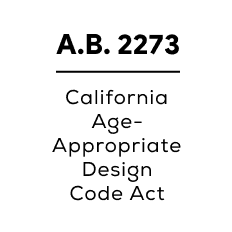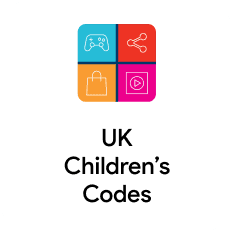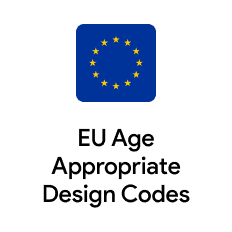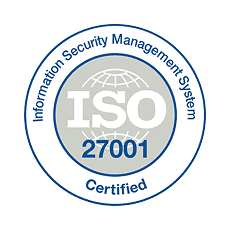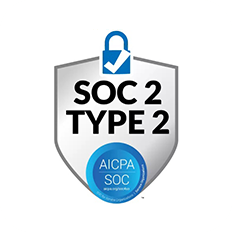Introduction
PrivateID is built for seamless, interoperable identity authentication with complete privacy at its core. Its edge-based architecture and patented tokenization ensure biometric data never leaves the device, enabling scalable, compliant, and frictionless authentication across industries.
Microsoft Azure Face API is a cloud facial recognition service that offers face detection, 1:1 verification, 1:N identification, “find similar,” and liveness detection. It’s delivered as a cloud API with Microsoft’s Responsible AI “Limited Access” controls, and typically requires transmitting images or embeddings to the service for processing.
1. Architecture
PrivateID: Performs 1:1 biometric matching directly at the device edge. Biometric data and PII remain securely on the device, preserving privacy while eliminating data breach risks and simplifying global compliance.
Azure Face API: Cloud-first. Clients call Microsoft’s service to run detection, verification, identification, and liveness. Person directories/groups for recognition are hosted in Azure; apps send face data (or references to images) to the service for processing.
2. Privacy & Tokenization
PrivateID: Uses patented Homomorphic Tokenization, transforming biometrics into irreversible, anonymized tokens. Tokens are unique, cannot be reverse-engineered, and are IEEE 2410 compliant and therefore do not incur
global biometric privacy law obligations under GDPR, CCPA, BIPA and HIPAA. No biometric images or templates are transmitted.
Azure Face API: Microsoft acts as a processor of customers’ biometric data; customers must disclose usage and comply with applicable laws. Images/face data are processed in Microsoft’s cloud; guidance recommends storing face images in Azure Blob Storage and referencing them via URL.
3. 1:1 vs 1:N Matching
PrivateID: Uses patented homomorphic tokenization to transform biometrics into irreversible, guaranteed unique, fully anonymized tokens for 1:N while performing 1:1 at the edge.
•1:1: Edge-based, no network transmission.
•1:N: Only anonymized tokens are transmitted; enables bandwidth-light (~1 KB/token) constant-time lookups (~5 ms) regardless of gallery size.
Azure Face API: Provides 1:1 Verify and 1:N Identify against a Person Group/Person Directory hosted in Azure. Performance scales with directory size and provisioned infrastructure; candidates are returned with confidence scores.
4. Multi-Modal Biometrics
PrivateID: Supports facial, voice, image of palm, and fingerprint biometrics, and can combine with passkeys and additional risk signals (geolocation, Wi-Fi sniffing, device fingerprinting).
Azure Face API: Focused on face recognition/liveness. Other modalities (voice, fingerprint) are not part of the Face API and would require separate Azure services/solutions.
5. Liveness Detection (PAD)
PrivateID: On-device, advanced anti-spoofing against photos, masks, and deepfakes without transmitting data.
Azure Face API: Provides Face Liveness detection that defends against spoofs (e.g., printouts, 2D/3D masks, replay on screens). Integration typically involves a client capture workflow coordinated with a cloud liveness session.
6. Scalability & Efficiency
PrivateID: Unlimited scalability with consistent performance. 5 MB image reduced to ~1 KB token. Constant performance regardless of gallery size.
Azure Face API: Person Groups/Directories must be trained/managed; identification quality and latency depend on image quality, gallery size, and service quotas. Microsoft notes training and recognition workflows (e.g., PersonGroup create/train) and quality considerations.
7. Accuracy
PrivateID: Delivers 99.999% accuracy across unlimited gallery sizes. (NIST FRVT leader)
Azure Face API: Offers competitive recognition with confidence-ranked candidates. Accuracy depends on image quality and configuration; Microsoft does not market it as edge-only or tokenized.
8. Compliance & Security
PrivateID: Edge (1:1) and tokenized (1:N) processing do not incur global biometric obligations under GDPR, CCPA, HIPAA, and BIPA (annually certified to IEEE 2410). No biometric data is stored or transmitted.
Azure Face API: Operates under Microsoft’s Responsible AI program with Limited Access. Customers must justify use cases, disclose usage, and ensure compliance; Microsoft explicitly restricts certain uses (e.g., by/for U.S. police departments).
9. Deployment & Integration
PrivateID: Lightweight SDK/API for rapid integration across IAM, healthcare, retail, and finance; software-only; runs on general-purpose hardware.
Azure Face API: Cloud SDKs/REST APIs across languages; typically requires provisioning Azure resources (Face service, storage for images) and managing Person Groups/Directories and training.
10. Ethics & Trust
PrivateID: Purpose-built for user-consented, privacy-preserving identity verification.
Azure Face API: Governed by Microsoft’s Responsible AI policies and Limited Access program; Microsoft removed capabilities that infer emotions or sensitive attributes.
11. Cost & Total Cost of Ownership (TCO)
PrivateID: Edge processing and tokenization reduce bandwidth, compute, and storage by orders of magnitude; minimal infrastructure.
Azure Face API: Consumption-based cloud service plus storage/egress as applicable; total cost scales with API volume, liveness sessions, storage, and gallery management (Person Directory/Group).
12. Latency & User Experience
PrivateID: Consistent ~100 ms processing for real-time UX at massive scale.
Azure Face API: Round-trip latency to cloud and liveness session orchestration affect UX; performance varies with network conditions, image quality, and gallery size.
13. Deployment Flexibility
PrivateID: Fully at the edge for 1:1 and hybrid edge-to-server for 1:N with tokenization; cloud/on-prem/hybrid with no vendor lock-in.
Azure Face API: Cloud-centric; edge-first (on-device) matching is not the default pattern for verification/identification. Liveness uses client capture but relies on cloud session APIs.
14. Ecosystem & Interoperability
PrivateID: Easily integrates with IAM, MFA, Passkeys, and risk-based authentication; standards-based (IEEE 2410, FIDO2).
Azure Face API: Integrates broadly within Azure (Blob Storage, App Services, Functions) and custom IAM flows; it’s not natively tied to FIDO2 or passkeys—those are integrated at the application level.
15. Bias & Fairness
PrivateID: Tokenization removes demographic markers from biometric data, reducing bias risk.
Azure Face API: Microsoft provides Responsible AI guidance and documentation for fair, transparent use but does not claim demographic-neutral tokenization within Face recognition.
16. Business & Market Positioning
PrivateID: Positioned for enterprises, healthcare, finance, and retail requiring privacy-first, compliant, and scalable biometric solutions.
Azure Face API: General-purpose cloud facial recognition with responsible-use gates; suitable where cloud processing is acceptable and customers can satisfy Limited Access criteria and compliance requirements.
Summary
PrivateID provides a privacy-first biometric platform that performs 1:1 matching at the device edge and leverages patented homomorphic tokenization for 1:N searches. This design ensures biometric data never leaves the device, delivers constant-time performance and multi-modal authentication, while inherently meeting global privacy obligations and reducing infrastructure costs.
Azure Face API, by contrast, is a cloud-hosted recognition service with 1:1/1:N and liveness detection that requires transmitting data to the service and managing cloud resources (person directories/groups, storage). Microsoft enforces Responsible AI and Limited Access policies (and has retired emotion/sensitive-attribute inference), but the cloud-centric model places privacy/compliance and performance trade-offs on the customer’s architecture and operations.









